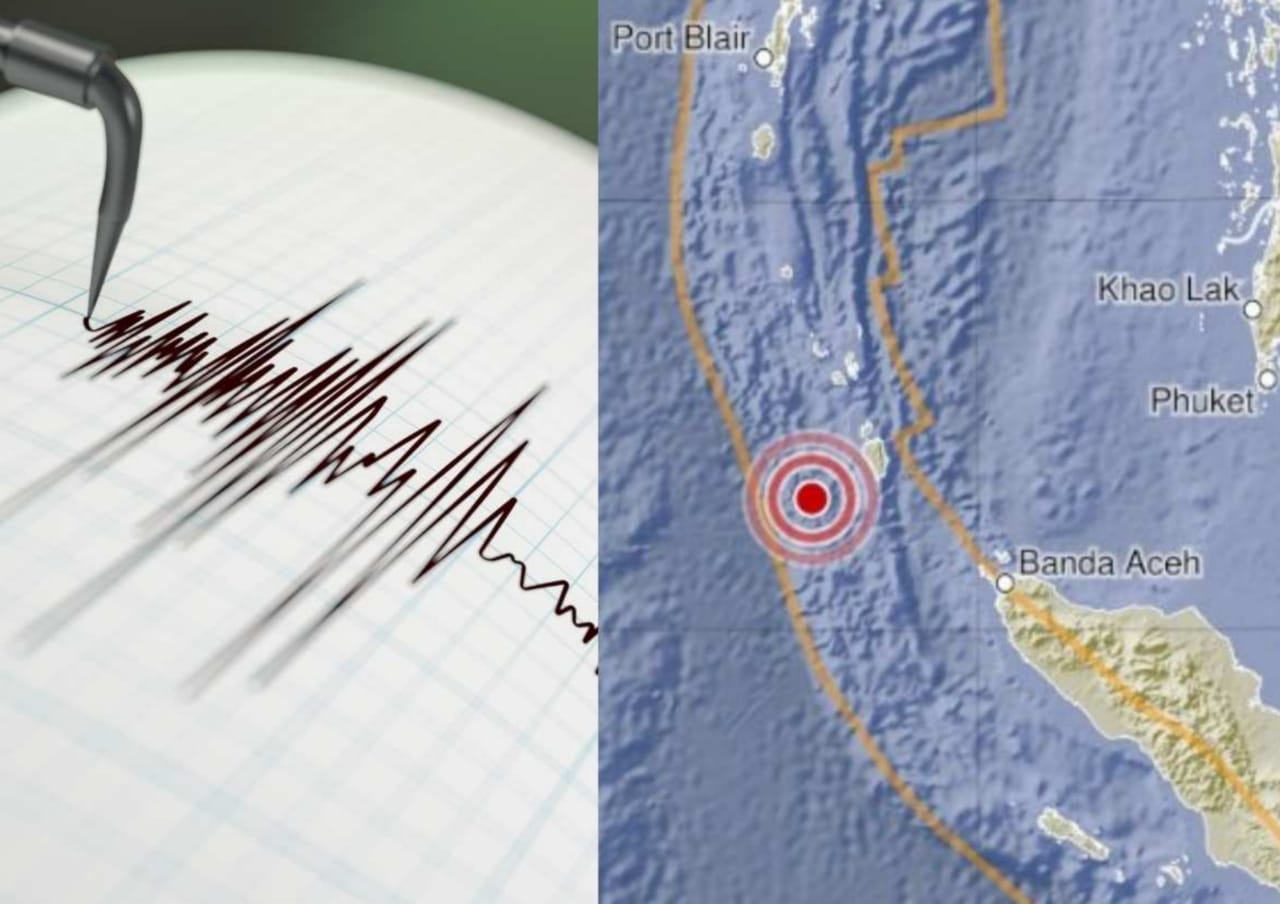
A strong earthquake measuring 6.3 on the Richter scale struck the Bay of Bengal in the early hours of Tuesday, according to the National Centre for Seismology (NCS). The tremors were recorded at 00:11:50 IST and were classified as shallow, with a depth of 10 kilometres.
The epicentre of the quake was located at latitude 6.82° north and longitude 93.37° east, approximately 538 kilometres south of Port Blair, in the Nicobar Islands region. Despite the strength of the quake, no casualties or structural damage have been reported as of now.
Authorities were quick to rule out the possibility of a tsunami. The Indian Tsunami Early Warning Centre stated, “Based on pre-run model scenarios, there is NO THREAT to countries in the Indian Ocean. No further bulletins will be issued unless the situation changes.”
Echoing this assurance, the Indian Ocean Tsunami Warning and Mitigation System (IOTWMS-TSP INDIA) released a similar advisory: “No further bulletins will be issued for this event unless other information becomes available.”
The tremor was also detected by international agencies. The United States Geological Survey (USGS) noted that the quake struck about 259 kilometres west-northwest of Sabang, located in Indonesia’s Aceh province. The region holds significance as it was one of the worst-affected areas during the devastating 2004 tsunami triggered by a 9.1 magnitude quake.
In a related update, the German Research Center for Geosciences (GFZ) reported a 6.2 magnitude quake in India’s Nicobar Islands on the same day. It is unclear whether this was the same event or a closely timed aftershock.
In light of India’s seismic vulnerability, the National Disaster Management Authority (NDMA) is conducting its first “mega-scale” integrated disaster management exercise in Delhi and the National Capital Region (NCR) on August 1. The drill, named ‘Suraksha Chakra’, is designed to test emergency responses to earthquake, industrial and chemical hazard scenarios.
The programme will begin with a symposium involving various stakeholder agencies at the Manekshaw Centre on July 29, followed by table-top exercises (TTEx) on July 30. According to NDMA officials, the full-scale drill on August 1 will involve coordinated efforts by multiple emergency and disaster response teams.
“This is the first such integrated disaster management exercise to be held in Delhi-NCR,” an NDMA member said during a press briefing. The initiative comes at a critical time as India faces increasing urbanisation and the related risk of large-scale seismic impact.
Although the recent quake in the Bay of Bengal did not result in immediate damage, it serves